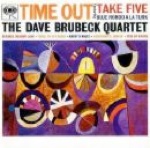LA PRIMAVERA (SPRING) 1st Movement
from THE FOUR SEASONS by Antonio Vivaldi
LA PRIMAVERA (SPRING) 1st Movement
from THE FOUR SEASONS by Antonio Vivaldi
ELEMENTS OF MUSIC


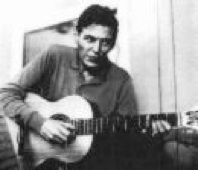

NESSUN DORMA
SYMPHONY NO. 40, I
SO DANCO SAMBA
SYMPHONY NO. 5, I
ALL BLUES
TAKE FIVE
Dave Brubeck Quartet
Sounds are vibrations of a physical medium perceived by the ear.
Vibrating objects send a disturbance through the air (or a liquid or
solid) in the form of sound waves that vibrate of ear drums that
send signals to our brain that we perceive as sound.
Sound wave properties - frequency, amplitude
Noise = irregular vibrations
ex. drums, cymbals, etc
Tone = regular vibrations
pianos, violins, human voice, etc


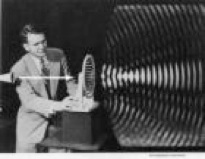
3 CHARACTERISTICS OF TONE
1. Pitch- ,corresponds to frequency
- relates to the relative highness or
lowness on a tone
Faster frequency = higher pitch
Slower frequency = lower pitch
2. Dynamics (Loudness, Intensity)
-corresponds to amplitude -relates to
loudness or softness of a tone
Higher amplitude = louder tone
Lower amplitude = softer tone
3. Tone Color- Timbre - corresponds
to the quality of a tone-relates to how
tones sound different from one another-
why a trumpet sounds different from a
saxophone or your voice, etc. Tone color
is distinguished by the material and
shape of an instrument and more
importantly by the overtones or
harmonics produced.
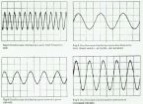
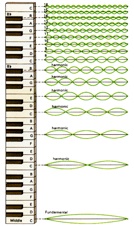
Listen to these recordings and describe the music in
terms of the elements of music described so far.
Symphony No. 5 - I - Beethoven
So Danco Samba - Jobim
Sepember - Earth, Wind, and Fire
1. Describe how pitch is used in general. How is pitched used in relation to high, middle or low pitch ranges? Does it vary? Is it fairly consistent? What effect do changes in pitch range have on the music?
2. Describe the dynamics. Are dynamics important? Is there much variation in dynamics? If so what effect does it have on the music?
3. Describe the tone colors or timbres, including noise. What instruments do you hear? Which instruments predominate? Are there many changes in tone colors or fairly consistent throughout?
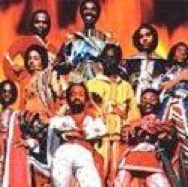
SEPTEMBER
INTERVALS
The distances between any two pitches is called an interval.
Octave- the most important and curious interval.
Octaves are produced by doubling or cutting in half the frequency of any given pitch. The same pitch class names are given to octaves -
for example A=440 hertz or cps (cycles per second)
there is also the note A=880 hertz that is 1 octave higher, and a note A=220 an octave lower. We hear these note as somehow equivalent but they have quite different frequencies. All music culture recognize this equivalence of the octave. Octave pitches are the same and different at the same time.
discovered
whole number
ratios for
intervals.
octave = 2:1
fifth = 3:2
fourth = 4:3
third = 5:4
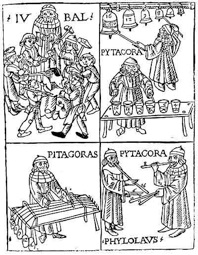
Pitches and scales are easily visualized on a keyboard. Western Music divides the octave into 12 equal parts. This is sometimes referred to as the chromatic scale. Most music we know is based on 7 note scales called diatonic scales. A scale is an ordering of pitches. Diatonic scales consist of a series of whole-steps and half-steps. The smallest distance between any two notes is called a half-step. a chromatic scales consists of all half-steps. A whole-step is the distance of two half-steps.
A sharp = # -raises a note a half-step
A flat =b -lowers a note a half-step
Major scale- a major scale can be demonstrated by playing the notes
C to C on a keyboard. By noting the pattern of half-steps and
whole-steps a formula can be derived that can be applied to major
scales starting on any note.
H = half-step
W = whole-step
C major scale C D E F G A B C
Formula for major scales = W W H W W W H
G major scale G A B C D E F# G
Minor scale - a minor scale can be demonstrated by playing the
notes A to A on a keyboard. By noting the pattern of half-steps
and whole-steps a formula can be derived that can be applied
to minor scales starting on any note.


C Major Scale

G Major Scale
A Minor Scale

Formula for minor scales = W H W W H W W
Rhythm relates to the time dimension of music.
The fundamental unit of musical time is the Beat.The Beat is the underlying pulse of music and all rhythms relate to the beat. Tempo refers to the speed of the beat. Beats are usually organized into a Meter that groups beats into recurring patterns two, three, four beats, etc. the first beat of each grouping usually gets a stress in traditional music. Each grouping is called a measure or bar.
Duple meter
> > > >
1 2 | 1 2 | 1 2 | 1 2 |
Triple meter
> > > >
1 2 3 | 1 2 3 | 1 2 3 | 1 2 3 |
Direct Beat occurs when the beat is explicitly stated by one or more instruments.
Indirect Beat
occurs when the beat is implied and not always played.
Deviations
from the beat can occur as
Accelerando - a gradual speeding up of the beat
Deaccelerando or Ritardando- a gradual slowing
down of the beat
Rubato - a fluctuating beat that slows down and speeds up in a random-like way.
Listen to these recordings and describe the music in
terms of the elements of music described so far.
1. Describe how pitch is used in general. How is pitched used in relation to high, middle or low pitch ranges? Does it vary? Is it fairly consistent? What effect do changes in pitch range have on the music?
2. Describe the dynamics. Are dynamics important? Is there much variation in dynamics? If so what effect does it have on the music?
3. Describe the tone colors or timbres, including noise. What instruments do you hear? Which instruments predominate? Are there many changes in tone colors or fairly consistent throughout?
4. Describe the beat. Is it direct or indirect or both at times? Describe the tempo as fast, slow, or moderate.
What is the meter? Are there any deviations from the beat? if so, what ?


